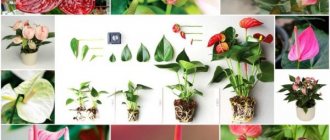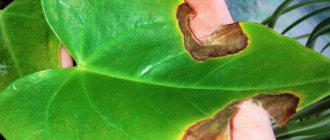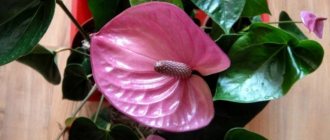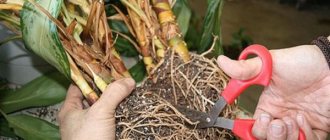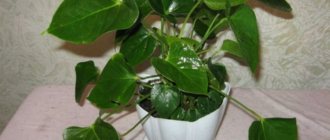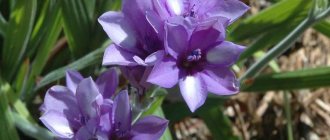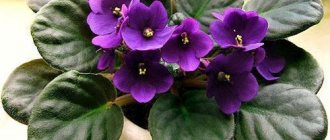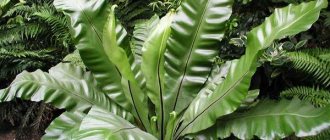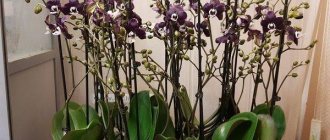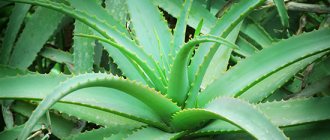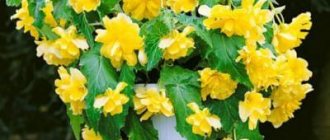What does Anthurium Andre look like?
Anthurium Andre is an evergreen perennial crop belonging to the Aroids, its birthplace is the tropical regions of South America.
When Andre's anthurium blooms, it looks very beautiful
In the forest area of Colombia and Ecuador, epiphytes are characterized by lanceolate, oval-shaped leaves of a bright green hue, the length of the shiny surface on the petiole is about 0.3 m. Its inflorescence consists of many yellow flowers. After some time, after the flower disappears, orange spherical fruits form on the anthurium.
The flower is considered conditionally poisonous. Anthurium leaves and stems contain toxic compounds. If they enter the digestive system, they can adversely affect the physical condition and health of humans or pets.
Attention! You should remember about the toxicity of the plant when choosing a room to install the pot, especially if you have cats, dogs or children at home.
Description of the Andre variety
The Anthurium of the Champion series is characterized by the compact size of the bush - usually they reach only 50-60 cm. The leaves sit on long, rigid petioles. The leaf blade is dark green, shiny, heart-shaped with an elongated tip.
The leaf size of an adult plant reaches 20-30 cm in length and 10-15 in width. The inflorescence is a yellow spadix. The flowers themselves in the inflorescence are small and inconspicuous.
What gives the flowers a special beauty is the spathe - a bract leaf growing from the base of the cob. The bedspread has a regular heart shape. Its surface is covered with raised veins and is glossy.
The Champion variety has 4 subvarieties:
- Pink Champion (Royal Pink Champion) is the largest, reaches a length of up to 90 cm. Against the background of large foliage, delicate, salmon-pink flowers bloom, up to 7 cm in size. The spadix is painted in a lilac-violet color, which, in the process of flowering, changes to greenish yellow. The shape of the flowers is heart-shaped, with a slightly raised tip of the spathe.
- White Champion is a compact bush, up to 50 cm in size. It is distinguished by large (8-9 cm) flowers that hover in a snow-white cloud above the dark foliage. The inflorescences consist of a yellowish-green spadix and a white spathe with barely visible pink veins. As it fades it turns green.
- Red Champion - 70-80 cm high with bright green leaves. The flowers are small, but very bright - scarlet, with a pronounced shine. The spathe is round in shape, with raised, slightly wavy edges. The ears are pinkish-green or yellow. The plant blooms profusely for 3 months.
- Cherry Champion is a 50 cm tall plant with large green heart-shaped leaves. The flowers are 4-5 cm in diameter, made of pleasant pure pink bracts and cherry cobs. A distinctive feature of the subvariety is the abundant and long flowering, lasting up to 3-3.5 months.
Each varietal variety is good in its own way. During the flowering period, the plant looks like a whole bouquet and will be a wonderful, memorable gift.
Features of home care
Normal growth and development of a plant occurs only when favorable conditions and proper care are provided.
Temperature
Anthurium Scherzer - home care
The suitable temperature for growing flowers in summer is +20..+25 degrees. If the thermometer readings drop to +18 degrees, the processes inside the plant slow down and sometimes stop altogether.
In winter, for 1-2 months, the anthurium goes into a dormant state, it rests. At this time, the owner of the flower must place it in a room where the thermometer readings approximately indicate 15 degrees Celsius. Not too hot conditions help the plant form buds and give the opportunity to actively bloom in the future.
Lighting
The flower does not like direct sunlight. It is better to place it near the windows on the western, eastern, northwestern and northeastern sides of the house.
It is possible to use fluorescent lamps to provide artificial light during periods of low natural light (usually necessary in the winter and late autumn months).
Irrigation works
Water for the flower must be passed through a filter or boiled and allowed to stand.
Attention! You can use tap water, but before doing this you need to dilute a couple of drops of vinegar or a little lemon juice in it.
During the entire growing season, water at a temperature of +20..+22 degrees can be used to water the flower in the required quantities. Watering is carried out as soon as the top layer of soil dries.
In winter, the amount of water and the number of irrigations decrease. A small amount of moisture or its excess in the soil has an equally bad effect on the development of the flower.
Pot suitable for anthurium
Air humidity
Flowers of this species require high humidity throughout their life (even in a dormant state).
To ensure good growth and development, it is recommended to spray warm water around the shoots every morning and evening. A container or tray of liquid near the pots will also increase the humidity.
The soil
The soil mixture must allow air to pass through it. This condition is met by soils for orchids, which can be bought in specialized flower shops.
When preparing the mixture, you need to take part of the stone sand from the river bottom, several pieces of crushed pine bark, coniferous, peat and green leafy soils, as well as a small handful of coal (necessarily charcoal).
Attention! The container for the flower should be small, but it must have a drainage layer (more than 3 cm) and holes in the walls.
Top dressing
Food supplements are applied to the soil every 15-20 days during the growing season. Ready-made mineral mixtures from stores are quite suitable for these purposes.
When and how does it bloom
Anthurium - care at home after purchase
Flowers on a plant of this species may appear during the last months of spring. Andre boasts bright red flowers that always catch the eye.
Anthurium Andre red - friendly flowering
Andre's anthurium literally surprises with its appearance at this moment. As a rule, even people who are far from growing indoor plants pay attention to a beautiful flower, and they have a desire to grow something similar.
This is interesting! Sometimes this type of flower in Russia is called Anthurium Andrianum red.
Botanical description and names
Anthurium andreanum is an evergreen perennial of the Anthurium genus and belongs to the large aroid family. The Anthurium genus has more than 800 species. The herbaceous plant grows as a terrestrial and epiphytic flower, and can grow into voluminous branching vines.
Reference! Literally translated, the name of the plant means “flower” and “tail,” which characterizes the structure of the flower itself. People call this flower “male happiness”, “flamingo flower”.
How does it reproduce
Anthurium reproduces by dividing large plants and separating side branches (“offspring”). These are the simplest methods that are usually performed during the process of replanting plants.
The roots must be separated with a sharp knife and the sections treated with powdered charcoal. After placing the plants in individual pots, you need to water them very carefully - they will not take root if over-watered.
Another propagation method is to root the stem with leaves and aerial roots. Such stems can take root much faster. But there is not much evidence that new Andre bushes were created in this way.
Anthurium propagation is also possible from seeds, but this is a rather complicated process at home. First, you need to pollinate the flowers, several days before flowering. To do this, rub the cobs several times with a cotton swab or brush.
Attention! If there are two or more plants, cross pollination is the best option.
The manual pollination procedure is performed 2-3 times over several days. After pollination, it is necessary to wait for the formation and ripening of the berries formed on the cobs. Next, you need to patiently wait for the anthurium to ripen from 9 months to a year.
Mature seeds should be planted immediately and the pulp removed as they will germinate soon. After 7-14 days, sprouts will appear.
Possible difficulties during cultivation
Flower growers who have Anthuriums in their home greenhouse know that this tropical plant must be protected from diseases and pests. Too often, crops suffer from attacks by spider mites, thrips, scale insects, worms and aphids, the main preventive tool for which is a warm shower. If you neglect the rules of caring for a flower, it can get stem or root rot, rust, downy mildew, and anthracnose.
The main sources of the listed diseases: insufficiently high air humidity, excessive watering, sick indoor plants in the neighborhood, poor-quality substrate, excess or lack of fertilizing. Andre's most common disease is anthracosis, which is accompanied by drying of the foliage and death of the flowerpot. Fungicide solutions are used as medicine.
Important! For safety, it is advisable to place the container with the plant in a place where children and pets, who can pick off its leaves and taste it, cannot reach. The fact is that the juice of the culture contains toxic substances that can cause health problems.
As a result, we can say the following. Anthurium Andre is a bright tropical flower that amazes with its incomparable appearance. Caring for such a guest from the tropics is not so difficult; the main thing is to stock up on knowledge about his morals and preferences.
Transfer
It is better to be careful when replanting indoor flowers. Anthurium Andre should only be replanted if absolutely necessary. For example, if the pot is already cramped, or during reproduction.
Reproduction by dividing the bush
Anthurium grows well in wide and low pots; there should be a thick drainage layer at the bottom. When choosing a new container, you should not forget about this. When replanting, you need to deepen the plant, paying attention to its roots and leaves. After transplanting Andre, he must be tied to wooden pegs so that the shoots do not break.
Important! The best soil for anthurium is a mixture of forest soil, bog moss and turf.
Pests and diseases
Various pests and diseases can interfere with the normal development and growth of the plant. The main pests of anthurium are red spiders and scale insects. Fighting them is not easy and not very effective. Regular watering with warm water and spraying is an excellent precaution against harmful insects.
Flowers often get sick due to insufficient care or unsuitable conditions. The main diseases are:
- Rot on the roots. The most common causes of rotting are low indoor temperatures and frequent waterlogging of the soil.
- Anthracnose. The symptom of this disease is a dry brown tip on the leaf, which first causes the leaf to dry out completely and then causes the entire plant to die. It is very difficult, and sometimes impossible, to cure plants from this disease. As a precaution, experienced gardeners recommend spraying fungicides.
In addition, Andre's anthurium can be affected by stem rot, rust, and powdery mildew. All these diseases are best recognized at the initial stage - in this case, treatment with systemic fungicides may well give a positive result.
Anthurium Andre is a rather whimsical plant that loves good care. Sometimes a flower may be subject to rot, disease or pests. To prevent this from happening, the plant must be properly cared for. But any work is rewarded. Anyone who achieves flowering from anthurium will never regret having such a flower at home.
Reasons for the lack of flowering of Anthurium Addre
It is only natural that exotic plants such as Anthurium Andre are grown at home for the sake of their magnificent flowering. However, sometimes the growing season of a flower passes without pleasing inflorescences, and then you should understand the reasons for the unpleasant surprise, which often lie in improper care:
- Hydration. It must be remembered that this species belongs to the inhabitants of tropical forests, and therefore requires high humidity around it. At the same time, the flower itself should not receive too much moisture through the soil.
- Air. The required temperature and a high degree of aeration of the root system must be ensured. To stimulate bud formation, it is recommended to place Anthurium in a cool place (about 16 degrees above zero). Do not allow drafts to form around the flower.
- Feeding. One of the reasons for the lack of inflorescences is a lack of nutrients. Fertilize the plant on time.
- Pests and diseases. The predictable result of plant disease is its silent refusal to bloom. It is urgent to take measures to treat it (see section on care).
- Excessive or insufficient light. Avoid exposing the flower to unscattered sunlight.
- Withered buds. For long-term flowering, Anthurium needs to ensure timely harvesting of already faded buds.
